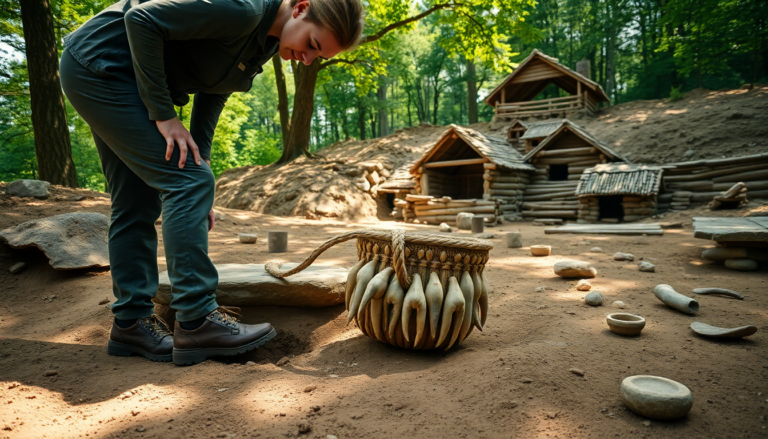Argomenti trattati
In a world where ergonomic baby carriers are all the rage, it’s fascinating to think that women in Neolithic Europe had their own unique ways of carrying infants—using bags crafted from hundreds of canine and wolf teeth. This stunning insight emerged from archaeological digs in Krauschwitz, Germany, where a burial site dating back over 5,000 years has unveiled a treasure trove of artifacts, each one whispering stories of motherhood, social status, and ancient rituals.
The Significance of Neolithic Baby-Carrying Bags
These “baby-carrying bags,” as archaeologists have affectionately called them, were much more than just practical items; they were potent symbols of status, motherhood, and social belonging. Found interred with young women—often pregnant or new mothers—these bags were laid to rest with care, hinting at a deep cultural significance tied to motherhood. By the third millennium BCE, it seems there was already a complex ritual surrounding maternal identity, encapsulated in the simple yet profound phrase, “this child is mine.”
The remarkable discovery took place along the planned route of the SuedOstLink high-capacity power line in Saxony-Anhalt, Germany. As is customary before construction begins, archaeological digs were conducted, unearthing what lay beneath what appeared to be an ordinary field: an ancient ritual landscape, a prehistoric necropolis complete with burial mounds, “houses of the dead,” and over 30 graves, 15 of which belonged to the Corded Ware culture.
Among these graves, three female burials revealed previously unseen artifacts: trapezoidal bags that had slipped from history, yet whose intricate embroidery had miraculously survived the test of time. What was the secret to their preservation? Dog teeth, meticulously drilled and sewn onto fabric, remained intact over millennia. Some bags even contained the bones of infants or fetuses, suggesting they served as primitive baby carriers.
The Craftsmanship and Symbolism of Baby-Carrying Bags
The way these bags were arranged among the remains—always positioned at the front near the abdomen—bolsters this interpretation. Crafting one of these bags required the collection of up to 350 dog teeth, stitched together in a layered, tile-like fashion. The dogs likely resembled today’s Münsterländer breed, specially bred and sacrificed at a young age for their finest teeth.
But these bags were more than just practical items; they were powerful cultural symbols reserved for elite women—young, fertile, and likely significant in their communities. The fact that many contained remains of children and were not reused (none were found repurposed) hints at their deeply personal nature, intertwined with notions of motherhood and identity.
Some bags were further adorned with wolf teeth sewn onto their straps, perhaps as tokens of protection or status. This blend of fashion, ritual, and spirituality is absolutely captivating. Decorative elements suggest intricate embroidery, luxurious fabrics, and meticulous craftsmanship, even featuring sequins made from canine molars. Can you imagine how such a bag would turn heads, both literally and figuratively?
A Poignant Discovery and Its Implications
One of the most touching discoveries near Nessa, just under two kilometers from Krauschwitz, involved a young woman of high societal standing found with one of these bags containing the bones of an infant, likely her child. This frozen moment in time speaks volumes about love, grief, and identity.
As we delve into the stories behind these ancient artifacts, we connect with a lineage of motherhood that transcends time. The careful crafting of these baby-carrying bags reflects not only a practical solution to child-rearing but also a profound cultural expression of identity and belonging. They remind us that behind every object, there’s a narrative waiting to be told—a testament to the enduring bonds of motherhood that continue to shape our world today.

